Deep Space Missions
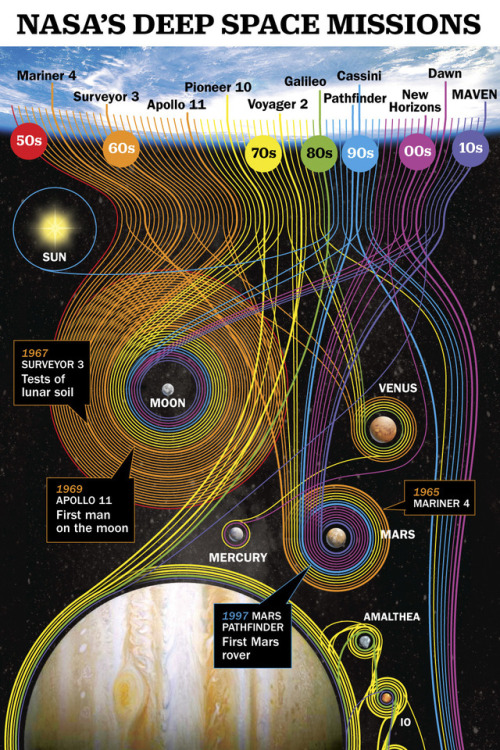
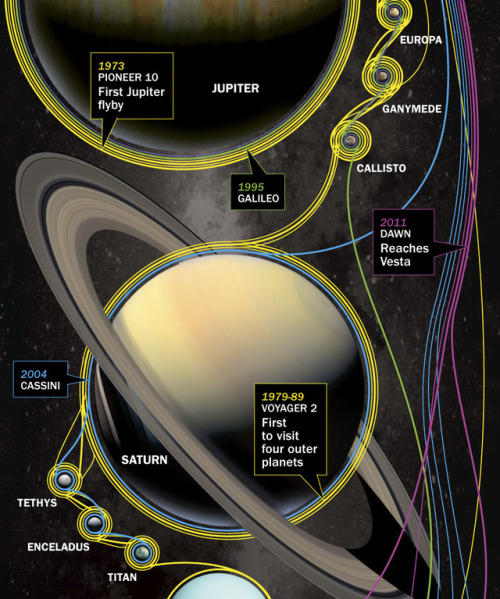
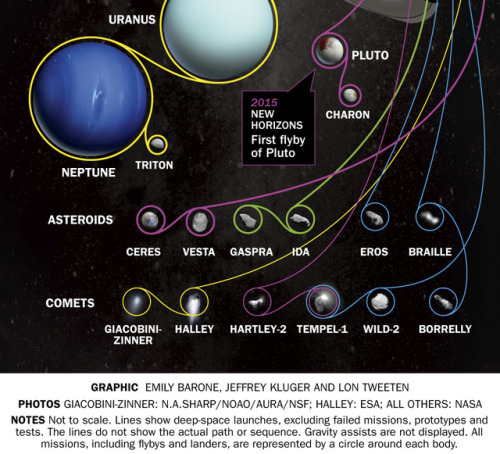
Deep Space Missions
More Posts from Ocrim1967 and Others


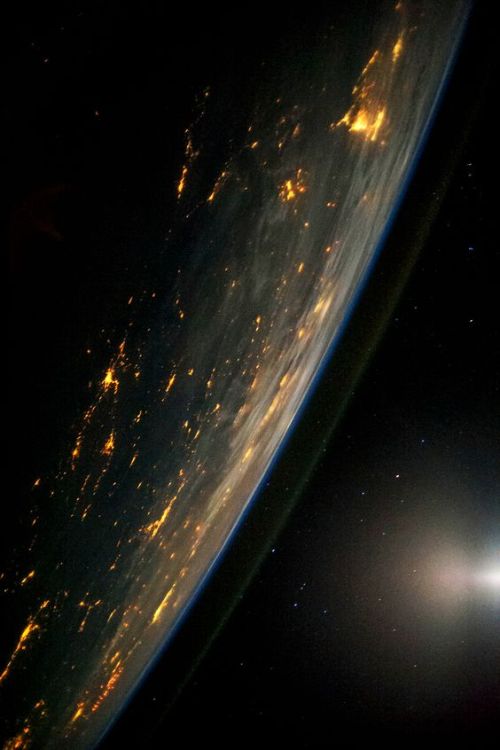
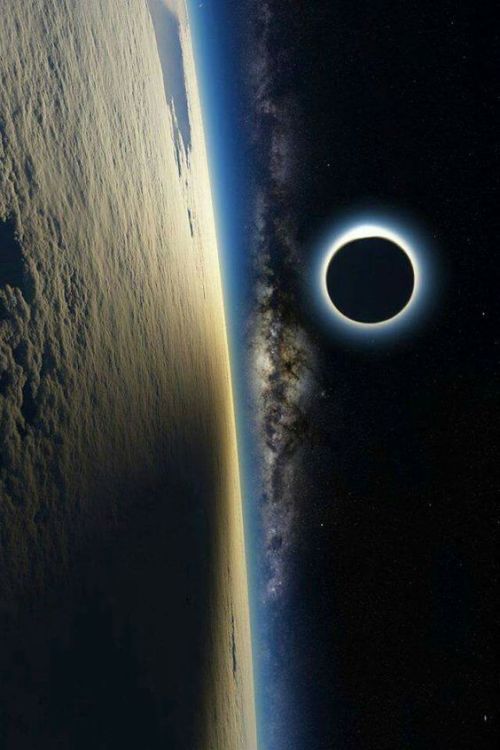



The galaxy is perfect



Animated Fine Art
Collection by E Lynx of famous artworks that have been animated and rendered in 3D which you can interact with their respective @sketchfab upload:
More Here
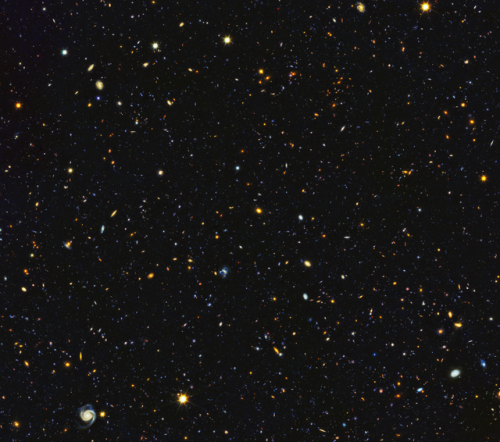
Astronomers have just assembled one of the most comprehensive portraits yet of the universe’s evolutionary history, based on a broad spectrum of observations by the Hubble Space Telescope and other space and ground-based telescopes. In particular, Hubble’s ultraviolet vision opens a new window on the evolving universe, tracking the birth of stars over the last 11 billion years back to the cosmos’ busiest star-forming period, about 3 billion years after the big bang. This photo encompasses a sea of approximately 15,000 galaxies — 12,000 of which are star-forming — widely distributed in time and space. This mosaic is 14 times the area of the Hubble Ultra Violet Ultra Deep Field released in 2014.
Credits: NASA, ESA, P. Oesch (University of Geneva), and M. Montes (University of New South Wales)









‘’A God’s Eye View of the Universe’‘
Credit: SpaceRip
What is Gravitational Lensing?
A gravitational lens is a distribution of matter (such as a cluster of galaxies) between a distant light source and an observer, that is capable of bending the light from the source as the light travels towards the observer. This effect is known as gravitational lensing, and the amount of bending is one of the predictions of Albert Einstein’s general theory of relativity.

This illustration shows how gravitational lensing works. The gravity of a large galaxy cluster is so strong, it bends, brightens and distorts the light of distant galaxies behind it. The scale has been greatly exaggerated; in reality, the distant galaxy is much further away and much smaller. Credit: NASA, ESA, L. Calcada
There are three classes of gravitational lensing:
1° Strong lensing: where there are easily visible distortions such as the formation of Einstein rings, arcs, and multiple images.

Einstein ring. credit: NASA/ESA&Hubble
2° Weak lensing: where the distortions of background sources are much smaller and can only be detected by analyzing large numbers of sources in a statistical way to find coherent distortions of only a few percent. The lensing shows up statistically as a preferred stretching of the background objects perpendicular to the direction to the centre of the lens. By measuring the shapes and orientations of large numbers of distant galaxies, their orientations can be averaged to measure the shear of the lensing field in any region. This, in turn, can be used to reconstruct the mass distribution in the area: in particular, the background distribution of dark matter can be reconstructed. Since galaxies are intrinsically elliptical and the weak gravitational lensing signal is small, a very large number of galaxies must be used in these surveys.

The effects of foreground galaxy cluster mass on background galaxy shapes. The upper left panel shows (projected onto the plane of the sky) the shapes of cluster members (in yellow) and background galaxies (in white), ignoring the effects of weak lensing. The lower right panel shows this same scenario, but includes the effects of lensing. The middle panel shows a 3-d representation of the positions of cluster and source galaxies, relative to the observer. Note that the background galaxies appear stretched tangentially around the cluster.
3° Microlensing: where no distortion in shape can be seen but the amount of light received from a background object changes in time. The lensing object may be stars in the Milky Way in one typical case, with the background source being stars in a remote galaxy, or, in another case, an even more distant quasar. The effect is small, such that (in the case of strong lensing) even a galaxy with a mass more than 100 billion times that of the Sun will produce multiple images separated by only a few arcseconds. Galaxy clusters can produce separations of several arcminutes. In both cases the galaxies and sources are quite distant, many hundreds of megaparsecs away from our Galaxy.
Gravitational lenses act equally on all kinds of electromagnetic radiation, not just visible light. Weak lensing effects are being studied for the cosmic microwave background as well as galaxy surveys. Strong lenses have been observed in radio and x-ray regimes as well. If a strong lens produces multiple images, there will be a relative time delay between two paths: that is, in one image the lensed object will be observed before the other image.

As an exoplanet passes in front of a more distant star, its gravity causes the trajectory of the starlight to bend, and in some cases results in a brief brightening of the background star as seen by a telescope. The artistic concept illustrates this effect. This phenomenon of gravitational microlensing enables scientists to search for exoplanets that are too distant and dark to detect any other way.Credits: NASA Ames/JPL-Caltech/T. Pyle
Explanation in terms of space–time curvature

Simulated gravitational lensing by black hole by: Earther
In general relativity, light follows the curvature of spacetime, hence when light passes around a massive object, it is bent. This means that the light from an object on the other side will be bent towards an observer’s eye, just like an ordinary lens. In General Relativity the speed of light depends on the gravitational potential (aka the metric) and this bending can be viewed as a consequence of the light traveling along a gradient in light speed. Light rays are the boundary between the future, the spacelike, and the past regions. The gravitational attraction can be viewed as the motion of undisturbed objects in a background curved geometry or alternatively as the response of objects to a force in a flat geometry.

A galaxy perfectly aligned with a supernova (supernova PS1-10afx) acts as a cosmic magnifying glass, making it appear 100 billion times more dazzling than our Sun. Image credit: Anupreeta More/Kavli IPMU.
To learn more, click here.










Ask Ethan: Is There A Fundamental Reason Why E = mc²?
“Einstein’s equation is amazingly elegant. But is its simplicity real or only apparent? Does E = mc² derive directly from an inherent equivalence between any mass’s energy and the square of the speed of light (which seems like a marvelous coincidence)? Or does the equation only exist because its terms are defined in a (conveniently) particular way?”
Quite arguably, Einstein’s E = mc² is the most famous equation in the entire world. And yet, it isn’t obvious why it had to be this way! Could there have been some other speed besides the speed of light that converts mass to energy? Could there have been a multiplicative constant out in front besides “1” to give the right answer? No, no there couldn’t. If energy and momentum are conserved, and particles have the energies and momenta that they do, there’s no other option.
Come learn, at last, why E = mc², and why simply no other alternative will do.










Happy 230th Birthday, Enceladus, Our Solar System’s Greatest Hope For Life Beyond Earth
“It is still a complete unknown whether Earth is the only world in the Solar System to house any form of life: past or present. Venus and Mars may have been Earth-like for a billion years or more, and life could have arisen there early on. Frozen worlds with subsurface oceans, like Enceladus, Europa, Triton or Pluto, are completely different from Earth’s present environment, but have the same raw ingredients that could potentially lead to life as well.
Are water, energy, and the right molecules all we need for life to arise? Finding even the most basic organisms (or even the precursor components of organisms) anyplace else in the Universe would lead to a scientific revolution. A single discovered cell in the geysers of Enceladus would be the most momentous discovery of the 21st century. With the recent demise of Cassini, on the 230th anniversary of Enceladus’ discovery, the possibility of finding the incredible compels us to go back. May we be bold enough to make it so.”
On this date in 1789, William Herschel, armed with the most powerful telescope known to humanity at the time (you can get a lot of grant money when you discover the planet Uranus and name it after the King), discovered a relatively small moon of Saturn just 500 kilometers across: Enceladus. For some 200 years, Enceladus was never seen as more than a single pixel across, until the Voyager probes flew by it. What they revealed was a remarkable, unique world in all the Solar System. Now that the Cassini mission is complete, we can look back at all we know about this world, and all the signs point to a remarkable story: there’s a subsurface ocean, possibly suitable as a home for undersea life.
Is Enceladus truly our Solar System’s best hope for life beyond Earth? That’s debatable, but there’s every reason to be hopeful. Come get the story here.










(Source)
First look at the 2024 total solar eclipse

The path of the April 8, 2024 total solar eclipse begins in the United States in Texas and ends in Maine. Google, INEGI
…The length of totality varies from one eclipse to the next. The reason is that Earth is not always the same distance from the Sun, and the Moon is not always the same distance from Earth. The Earth-Sun distance varies by 3 percent and the Moon-Earth distance by 12 percent. The result is that the maximum duration of totality from 2000 b.c. to a.d. 3000 is 7 minutes, 29 seconds. (That eclipse will occur July 16, 2186, so don’t get too excited for it.)
While the maximum length of totality during the April 8, 2024, eclipse won’t be that long, it’s still a worthy chunk of time: 4 minutes, 28 seconds — 67 percent longer than the one in 2017. And as with that one, everyone in the contiguous U.S. will see at least a partial eclipse. In fact, as long as you have clear skies on eclipse day, the Moon will cover at least 16.15 percent of the Sun’s brilliant surface. That minimum comes at Tatoosh Island, a tiny speck of land west of Neah Bay, Washington. And although our satellite covering any part of the Sun’s disk sounds cool, you need to aim higher.
Read more ~ Astronomy Magazine Posted by Michael Bakich on Sunday, September 23, 2018










This Is What We Know About Black Holes In Advance Of The Event Horizon Telescope’s First Image
“For hundreds of years, humanity has expected black holes to exist. Over the course of all of our lifetimes, we’ve collected an entire suite of evidence that points not only to their existence, but to a fantastic agreement between their expected theoretical properties and what we’ve observed. But perhaps the most important prediction of all — that of the event horizon’s existence and properties — has never been directly tested before.
With simultaneous observations in hand from hundreds of telescopes across the globe, scientists have finished reconstructing an image, based on real data, of the largest black hole as seen from Earth: the 4 million solar mass monster at the center of the Milky Way. What we’ll see on April 10 will either further confirm General Relativity or cause us to rethink all that we believe about gravity. Eager with anticipation, the world now awaits.”
The Event Horizon Telescope will, on April 10 (tomorrow, at the time of this writing), release an image two years in the making: of the event horizon of the black hole at the Milky Way’s center. Many will look at this as the first definitive proof that black holes truly exist, but we mustn’t forget all the (overwhelming!) evidence we already have in hand. There is a ton that we already know about black holes that has been demonstrated observationally, and all of it is in spectacular agreement with what we theoretically expect.
On the eve of the Event Horizon Telescope’s big announcement, take some time to get a little perspective, and learn what we already know about black holes!
-
 jellyfishinajamjar reblogged this · 2 months ago
jellyfishinajamjar reblogged this · 2 months ago -
 jellyfishinajamjar liked this · 2 months ago
jellyfishinajamjar liked this · 2 months ago -
 sadde liked this · 4 months ago
sadde liked this · 4 months ago -
 satanandgorgeous liked this · 5 months ago
satanandgorgeous liked this · 5 months ago -
 likewatevrdude reblogged this · 6 months ago
likewatevrdude reblogged this · 6 months ago -
 mrsattila reblogged this · 6 months ago
mrsattila reblogged this · 6 months ago -
 tadeuszip reblogged this · 6 months ago
tadeuszip reblogged this · 6 months ago -
 annan96jk liked this · 6 months ago
annan96jk liked this · 6 months ago -
 anna35foc liked this · 7 months ago
anna35foc liked this · 7 months ago -
 wally1129 liked this · 8 months ago
wally1129 liked this · 8 months ago -
 heckcareoxytwit liked this · 10 months ago
heckcareoxytwit liked this · 10 months ago -
 whatssupplaya liked this · 10 months ago
whatssupplaya liked this · 10 months ago -
 thebezzz reblogged this · 10 months ago
thebezzz reblogged this · 10 months ago -
 diri2002 liked this · 11 months ago
diri2002 liked this · 11 months ago -
 bu1410 liked this · 1 year ago
bu1410 liked this · 1 year ago -
 sillyeclipseprunehands liked this · 1 year ago
sillyeclipseprunehands liked this · 1 year ago -
 die-tenebris reblogged this · 1 year ago
die-tenebris reblogged this · 1 year ago -
 shiroweenie liked this · 1 year ago
shiroweenie liked this · 1 year ago -
 expectopatronope liked this · 1 year ago
expectopatronope liked this · 1 year ago -
 emmmidk liked this · 1 year ago
emmmidk liked this · 1 year ago -
 arinn-sinncubus liked this · 1 year ago
arinn-sinncubus liked this · 1 year ago -
 sorthyboy reblogged this · 1 year ago
sorthyboy reblogged this · 1 year ago -
 zetragildcosplay liked this · 1 year ago
zetragildcosplay liked this · 1 year ago -
 dmitriy-rusanov liked this · 1 year ago
dmitriy-rusanov liked this · 1 year ago -
 itsmydreamylife reblogged this · 1 year ago
itsmydreamylife reblogged this · 1 year ago -
 itsmydreamylife liked this · 1 year ago
itsmydreamylife liked this · 1 year ago -
 igcomgolfhydni liked this · 1 year ago
igcomgolfhydni liked this · 1 year ago -
 raweadeadmobo liked this · 1 year ago
raweadeadmobo liked this · 1 year ago -
 asp885 liked this · 1 year ago
asp885 liked this · 1 year ago -
 stalarprodmemar liked this · 1 year ago
stalarprodmemar liked this · 1 year ago -
 wayno08 liked this · 1 year ago
wayno08 liked this · 1 year ago -
 youmaysaythatimadreamer-can liked this · 1 year ago
youmaysaythatimadreamer-can liked this · 1 year ago -
 iridissparks liked this · 1 year ago
iridissparks liked this · 1 year ago -
 iridissparks reblogged this · 1 year ago
iridissparks reblogged this · 1 year ago -
 wilberado reblogged this · 1 year ago
wilberado reblogged this · 1 year ago -
 wilberado liked this · 1 year ago
wilberado liked this · 1 year ago -
 tiliman2 reblogged this · 1 year ago
tiliman2 reblogged this · 1 year ago -
 tiliman2 liked this · 1 year ago
tiliman2 liked this · 1 year ago -
 twonshawn reblogged this · 1 year ago
twonshawn reblogged this · 1 year ago